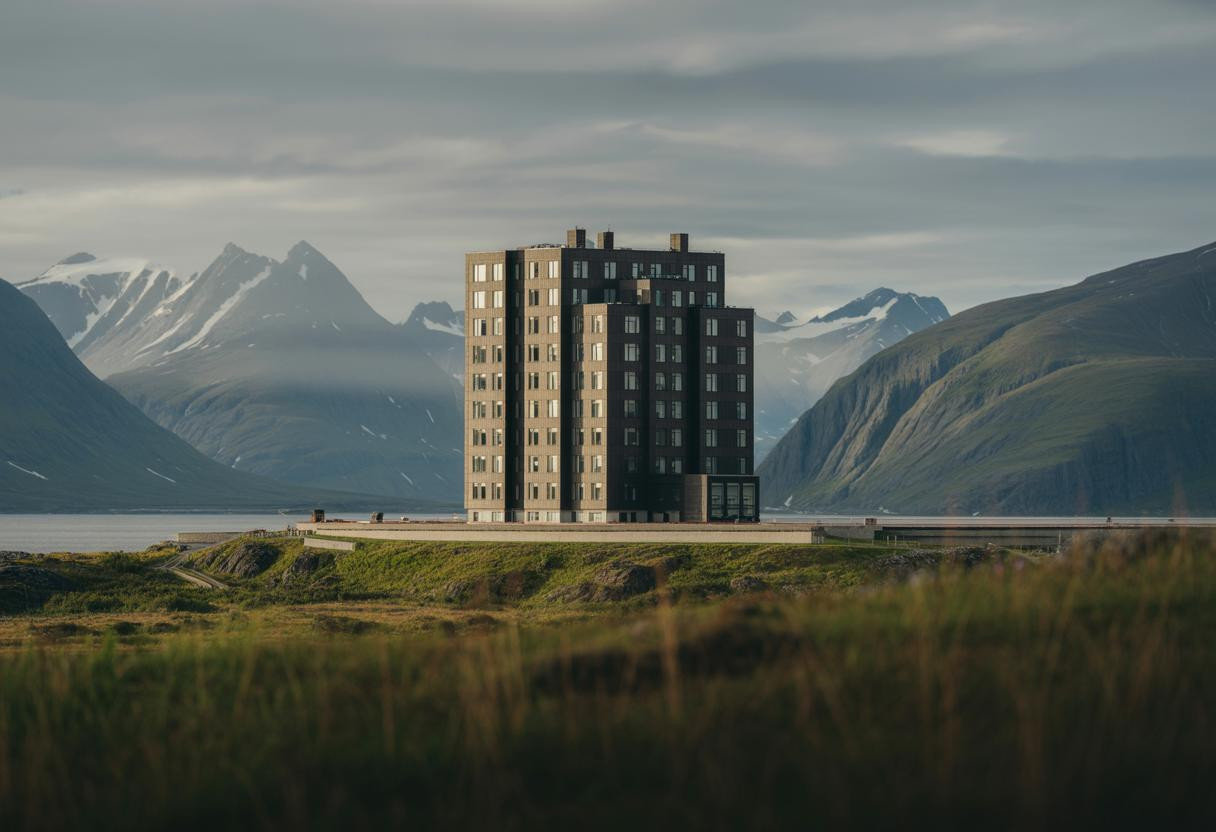Living in Whittier, Alaska means sharing hallways, elevators, and daily life with nearly your entire town—all 200+ residents packed into a single 14-story building. This isn’t just unusual housing; it’s a real-world experiment in human psychology that reveals surprising truths about community living, economic efficiency, and survival in extreme environments.
The remarkable story behind America’s most consolidated community
Begich Towers houses 85% of Whittier’s population in what was originally a Cold War-era military barracks. Built to withstand bombing and Alaska’s brutal weather, this concrete fortress now contains everything residents need: police station, post office, grocery store, church, health clinic, and even a heated tunnel connecting to the school.
The setup emerged from necessity. With temperatures dropping to -40°F and winds reaching 60+ mph, stepping outside becomes genuinely dangerous for months. The building’s self-contained design means residents can live, work, worship, shop, and send their children to school without ever facing Alaska’s harshest elements.
What started as military efficiency has evolved into America’s most extreme example of vertical community living, where your mayor might be your upstairs neighbor and the grocery clerk lives down the hall.
How extreme proximity reshapes human behavior and economics
Social dynamics create unexpected community bonds
Living this close forces residents to develop sophisticated conflict resolution skills that most communities never need. With a 20% poverty rate and median income of $57,188, economic stress could easily fracture such tight quarters. Instead, residents report unusually strong mutual support networks.
The building’s strict 10:30 PM curfew for the tunnel system creates shared rhythms that traditional neighborhoods lack. Everyone follows the same schedule, attends the same church services, and shops at the same store. This forced synchronization eliminates many social friction points while creating others around privacy and autonomy.
Economic efficiency challenges traditional infrastructure models
Whittier’s model consolidates municipal services in ways that slash per-capita costs. Instead of separate buildings for police, fire, postal services, and retail, everything operates under one roof with shared heating, security, and maintenance systems.
However, this efficiency comes with concentrated risk. The recent $3 million renovation highlighted how single-point failures can threaten an entire community. When elevators break or heating systems fail, it affects everyone simultaneously. Similar challenges face other micro-communities managing essential services with limited resources.
Surprising lessons for modern urban planning challenges
Whittier’s declining population (down 2.2% annually) reveals a critical contradiction: while the building-centric model handles extreme weather brilliantly, it struggles with economic diversification and youth retention. Only 50 children attend the connected school, suggesting limited opportunities for families.
The most counterintuitive finding? Privacy concerns rank lower than expected among residents. Unlike urban apartment living, Whittier’s shared infrastructure creates mutual dependence that transforms potential irritations into community bonds. Residents actively choose this lifestyle over conventional alternatives in nearby Anchorage.
Practical applications for climate resilience planning
Urban planners studying extreme weather adaptation can learn from Whittier’s centralized service delivery model. The building demonstrates how consolidating essential functions reduces vulnerability during natural disasters while maintaining community cohesion.
For Arctic regions facing similar challenges, Whittier proves that vertical density combined with comprehensive amenities can sustain communities where traditional sprawl fails. The tunnel system alone saves thousands in heating costs while ensuring emergency access year-round.
Communities exploring alternative municipal models might study how single-person governance structures scale differently than Whittier’s building-wide democracy, where proximity enables direct participation but also intensifies disagreements.
Economic diversification strategies for isolated communities
Whittier’s tourism potential remains largely untapped, unlike communities that have successfully monetized unique characteristics for sustainable revenue. The building’s novelty could attract visitors, but current infrastructure limits accommodate only cruise ship passengers during summer months.
Remote work opportunities could transform Whittier’s economic outlook. High-speed internet access would enable residents to earn outside wages while benefiting from extremely low living costs and unique community bonds.
What Whittier reveals about human adaptability
This remarkable Alaskan experiment proves that humans can thrive in seemingly impossible living situations when necessity drives innovation. Whittier’s residents haven’t just survived extreme consolidation—they’ve created a functioning democracy, maintained essential services, and built lasting community bonds within concrete walls that most people would find claustrophobic.
